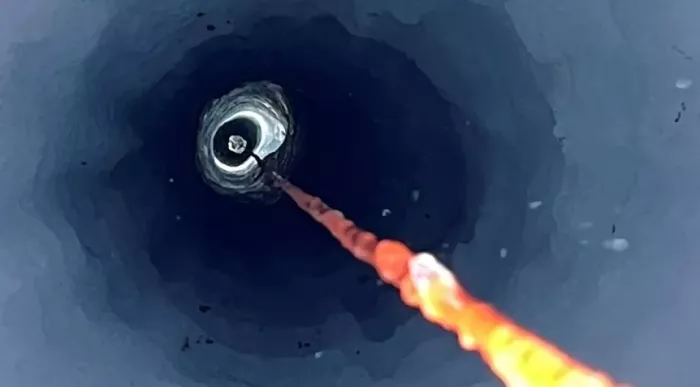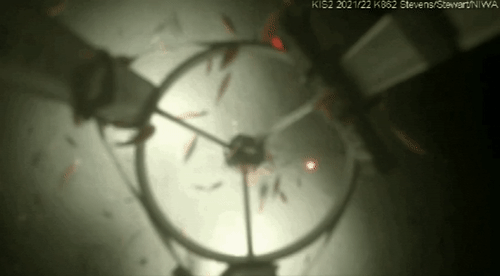According to CNET, scientists have opened a "gateway" to a world of small crustaceans in Antarctica, these crustaceans thrive in the saltwater estuary about 1600 feet below the Ross Ice Shelf, the largest ice shelf in Antarctica** Scientists at New Zealand's National Institute of water and atmosphere (Niwa) used hot water pipes to melt the ice shelf until they found an ice river about 6.5 miles long, more than 300 yards wide and 800 feet deep.

Niwa oceanographer Craig Stevens said: "Imagine Sydney Harbor, but under 600 meters (about 2000 feet) of snow and ice. There, it is completely dark -- too deep for sunlight -- and extremely cold."
This is not an ideal place for life. But when they put down some recording equipment, they were surprised to find that the river was full of amphipods. These crustaceans, like shrimp, swam around there, and only the light of the camera could illuminate them.
A [report] by Stevens at Niwa( https://niwa.co.nz/news/the-search-for-answers-in-the-ice ) "When you see one of these things, you'll jump up with joy. But there are so many animals that we can't cope with them." He added: "there are all these animals swimming around our camera, which means that there is obviously an important ecosystem process there. We will conduct more research on them by analyzing water samples to test nutrients and so on."

Stevens told CNET that sometimes there are "absolute crowds" of "swimmers" buzzing there. However, in other records of the river, far fewer organisms were found. He points out that this variability is "part of the excitement".
The world below Antarctica is still a mysterious place, because access to these subglacial rivers or water columns is particularly difficult. Researchers have to fight the weather, drill or melt thick ice before they can send drones or camera equipment down. It's really hard to get to the world under the ice. However, once you break through that terrible barrier, endless wealth is waiting for you.
Stevens said, "in a way, everything is new. We just need to put the camera on the rope to get a picture we have never seen before."
In 2021, Antarctic researchers of the British Antarctic survey discovered unusual life at a depth of about 4000 feet: strange "floating eaters", such as sponges, curled up on a rock deep in the abyss. Their discovery took place on the other side of the continent, under the Filchner Ronne ice shelf. This is a surprise - although it is known that mobile organisms occupy the dark Antarctic Ocean floor, it is unexpected to find fixed organisms living in nutrient poor areas.
A similar problem arises with amphibians found under the Ross Ice Shelf. Stevens said, "what supplies nutrients is probably the most curious thing for us."
Now is an appropriate time to discover the Antarctic biological hot spots that have never been seen before and raise such issues. Parts of the continent are warming faster than anywhere else in the world, which may stimulate the entry of alien species and destroy fragile ecosystems that have long been isolated from the rest of the world.
Stevens pointed out that the first step to understand how important these subglacial estuaries may be to Antarctica is to find out their similarities and differences with normal estuaries. The team plans to analyze water samples and test nutrients, which could reveal how life thrives away from light and open oceans.